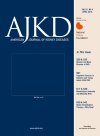Methods for Diagnosing Proteinuria—When to Use Which Test and Why: A Review
Proteinuria plays a central role in the diagnosis of kidney disease and has a high prognostic value. The test methods used differ considerably regarding their impact on test accuracy, sensitivity, and specificity. Therefore, knowledge of the methodology is crucial for the interpretation of the results. In addition to the distinction between semiquantitative and quantitative tests, there are also relevant differences within the 2 methods. In general, semiquantitative tests are easy to handle but have limitations such as incomplete quantification, a lack of specificity regarding the type of proteinuria, and a high rate of false-positive results that require retesting with a quantitative method for verification.



